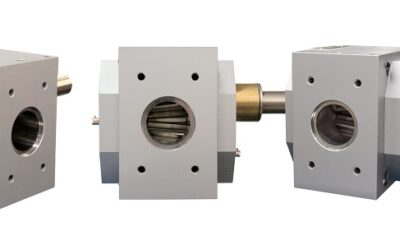Technology
Emergency Truck Lights: Why They Are So Important

Emergency truck lights are imperative when it comes to Aussie construction sites. Whether you’re working on a public road or a private build, having the right safety lighting for workers, pedestrians and motorists is essential.
This technology has always been pivotal for illuminating access points and keeping pathways well lit, not to mention alerting the public to works being conducted in a particular location.
There are myriad benefits for fitting safety lighting to your truck, and we are going to have a look at them below, just to show why they are such an integral element of Australian industry:
Table of Contents
So, what exactly is emergency lighting?
Emergency safety lights are something that can be attached to a truck to alert people of your onsite presence. Whether you’re static or on-the-go, it’s an imperative piece of technology for construction sites across the country. We already know that they are imperative for first responders, but they provide similar benefits for construction workers when it comes to lighting particular locations and alerting staff and the general public to a potential hazardous situation.
There are numerous lighting options available, including mini bar, interior bars, surface mount LEDs and more. You typically have three bulb variations at your disposal, and these include a number of flashing designs and beams you need for the job. It can be difficult to choose between these, but with a little experience in construction lighting or by talking to your provider you should have no trouble choosing the right design for your needs.
The benefits of emergency truck lighting
Regardless of your project’s status, every site can benefit from safety lighting. Whether it’s emergency lighting, floodlights or something completely different, they can all provide outstanding benefits to ensuring the safe illumination of a particular location.
They are also an outstanding method for ensuring the site runs in a safe manner. Although many construction teams will have their own equipment to illuminate an area, this essential lighting is still necessary to have these lights attached to vehicles as they help illuminate a certain area with the help of raising the fixture whilst being highly mobile around the site.
Having the right lighting can help your team know exactly what they are working on and ensure the accuracy of their work. Work that is done in poor lighting , but can also end with shoddy work, something that will only cost more to rectify later on.
So, regardless of what kind of site it is, it’s imperative that you operate them in a safe and accurate manner. This safety lighting can be used in a range of conditions, regardless of the time of day or climatic influences.
Finally, they can help you move more easily around the site whilst making it more accessible. Do you require more lighting in one area? Having this technology at your disposal makes things much safer and more efficient for construction workers, ensuring they have the proper illumination when they need it!
It’s just one of the safest options for construction lighting
Australian building standards are rigorous and require first class lighting to ensure worker and pedestrian safety. Whether it’s ensuring your site is illuminated for staff to easily move around or it’s to illuminate a safe passageway for pedestrians in the surrounding area, you can never overlook this imperative safety technology for Australian worksites!
Technology
Innovations in Industrial Gear Pump Technology: Recent Developments and Future Trends

Industrial gear pumps have long been cornerstones of fluid transfer systems in industries such as manufacturing, chemical processing, food production, and oil and gas. Known for their durability, precision, and ability to handle high-pressure operations, these pumps continue to evolve as technological advancements address efficiency challenges, performance demands, and sustainability concerns.
This blog explores the latest innovations in industrial gear pump technology, highlights their practical applications, and looks into the trends shaping their future.
Table of Contents
The Basics of Industrial Gear Pumps
How Industrial Gear Pumps Work
At the core, industrial gear pumps operate via interlocking gears. When these gears rotate, they create a sealed chamber, drawing in liquid at the pump inlet and pushing it forward and out through the discharge point. This precise mechanism makes them ideal for handling viscous fluids, chemicals, and even abrasive materials.
Their design provides inherent advantages such as high volumetric efficiency, continuous flow, and compact size, making them a preferred choice in countless industrial settings.
Why Innovation Matters in Gear Pump Technology
Despite being an established technology, innovation in industrial gear pumps is crucial to keeping up with evolving industry demands. Businesses are looking for equipment that improves operational efficiency, reduces downtime, and aligns with sustainability goals. To meet these needs, manufacturers are pushing the boundaries of gear pump design and execution.
Recent Innovations in Industrial Gear Pump Technology
Material Advancements
Material science is playing a pivotal role in improving the reliability and longevity of gear pumps. Many manufacturers are now incorporating high-performance materials such as reinforced polymers, ceramics, and advanced stainless steel alloys.
Benefits:
- Improved durability for processing abrasive or corrosive fluids.
- Enhanced chemical resistance, ensuring compatibility with more complex industrial liquids.
- Reduced wear and tear, leading to longer operational lifespans and lower maintenance costs.
These materials have been particularly successful in pumps working in highly corrosive environments, such as those used in chemical manufacturing plants.
Efficiency Through Smart Technology
Digitalization and the Internet of Things (IoT) are redefining industrial gear pump functionality. Smart sensors and monitoring systems are increasingly being integrated into the control systems of these pumps.
Capabilities:
- Real-time tracking of performance metrics, such as flow rates, pressure, and temperature.
- Predictive maintenance alerts based on data trends, which help reduce downtime and avoid costly repairs.
- Remote monitoring capabilities that enable operators to manage gear pumps from centralized systems or mobile devices.
These smart capabilities not only optimize performance but also ensure compliance with safety protocols by providing early detection of potential issues.
Energy-Efficient Designs
Energy efficiency is at the forefront of innovations in industrial gear pumps. Manufacturers are now developing models with improved hydraulic designs and variable-speed drives.
Outcomes:
- Reduced energy consumption, which is particularly important in industries with high-volume operations.
- Lower operational costs for businesses.
- Decreased environmental footprint, aligning with global sustainability objectives.
For example, modern gear pumps equipped with high-efficiency motors can consume 20–30% less energy compared to earlier designs, a significant saving over time.
Enhanced Precision for Specialized Applications
Industries such as pharmaceuticals, food production, and cosmetics demand exceptionally high precision in fluid handling. Recent advancements in gear pump technology have focused on improving accuracy in these niche applications.
Features:
- Higher tolerance for dosing micro-quantities of fluid.
- Precision-engineered gears to ensure minimal pulsation during operation.
- Specialized coatings to prevent contamination in sensitive processes.
Such innovations are paving the way for smoother, safer, and more precise industrial operations.
The Future of Industrial Gear Pumps
Sustainable Manufacturing Practices
With global attention to sustainability, the future of gear pump technology will heavily involve eco-friendly manufacturing practices. Expect a shift toward recyclable materials and reduced resource consumption during production.
Artificial Intelligence Integration
Looking ahead, artificial intelligence (AI) will likely revolutionize how industrial gear pumps are operated and maintained. AI applications will further enhance predictive maintenance capabilities by leveraging big data analytics to identify failure patterns with unprecedented accuracy.
Customization at Scale
Industries are increasingly seeking tailored solutions for their unique processes. Future gear pumps will prioritize modular designs, allowing for easy customization without the need for entirely new builds.
Exploring New Applications
As industries like renewable energy and biotechnology grow, so will the potential applications for gear pumps. Continued innovation will adapt this technology for emerging needs, from handling biofuels to supporting cutting-edge scientific research.
Why Investing in Modern Gear Pumps Is Crucial
Adopting advanced industrial gear pumps can deliver measurable benefits to your bottom line. Improved energy efficiency, reduced downtime, and greater operational control mean significant cost savings and enhanced productivity.
If your business is serious about staying competitive, modern gear pump technology should be at the heart of your fluid transfer systems. Regular upgrades and investments in innovation ensure you won’t fall behind in this rapidly evolving industrial landscape.
Final Thoughts
Industrial gear pump technology is far from stagnant. With ongoing advancements in materials, smart technology, energy efficiency, and precision engineering, these systems are becoming more reliable, efficient, and adaptable than ever before.
Whether you’re optimizing current operations or exploring future opportunities, staying informed about the latest trends can ensure your organization remains at the forefront of industrial innovation.
Technology
24/7 Incident Response (DFIR) Services: Your Shield Against Cyber Threats

In today’s digital landscape, organizations face a constant barrage of cyber threats that can disrupt operations and compromise sensitive data. With the increasing sophistication of cyberattacks, having a robust incident response plan is no longer optional—it’s essential. This is where 24/7 Incident Response (DFIR) Services come into play. These services are designed to provide immediate support during a security incident, ensuring that organizations can respond effectively and recover swiftly.
Table of Contents
What Are 24/7 Incident Response (DFIR) Services?
Digital Forensics and Incident Response (DFIR) services encompass a range of processes aimed at detecting, responding to, and recovering from cybersecurity incidents. These services are available around the clock, ensuring that organizations have access to expert assistance whenever an incident occurs. The primary goals of DFIR services are to minimize damage, restore operations, and gather evidence for potential legal actions.
Key Components of DFIR Services
1. Incident Detection and Monitoring
- Continuous monitoring of systems and networks is crucial for early detection of anomalies that may indicate a security breach. Advanced monitoring tools and threat intelligence are employed to identify potential threats in real time.
2. Incident Response Planning
- Effective incident response requires a well-defined plan that outlines the steps to be taken during a security incident. DFIR services help organizations develop and implement incident response plans tailored to their specific needs.
3. Investigation and Analysis
- Once an incident is detected, DFIR professionals conduct thorough investigations to determine the nature and extent of the breach. This includes analyzing logs, identifying compromised systems, and understanding the attack vectors used by cybercriminals.
4. Containment and Eradication
- Quick containment of the incident is essential to prevent further damage. DFIR services work to isolate affected systems, eliminate the threat, and ensure that attackers can no longer access the network.
5. Recovery and Restoration
- After containment, the focus shifts to recovering and restoring affected systems to normal operations. This may involve restoring data from backups, reinstalling software, and applying patches to vulnerabilities.
6. Post-Incident Review
- After the incident is resolved, a post-incident review is conducted to analyze the response efforts and identify areas for improvement. This review helps organizations refine their incident response plans and strengthen their security posture.
The Importance of 24/7 Availability
Cyberattacks can happen at any time, and the damage can escalate rapidly. Having access to 24/7 Incident Response (DFIR) Services ensures that organizations can respond to incidents promptly, regardless of when they occur. Key benefits of round-the-clock availability include:
- Immediate Response: Quick detection and response can significantly reduce the duration and impact of an incident. The sooner a breach is contained, the less damage is done.
- Expert Guidance: Organizations may lack the internal resources or expertise to handle complex security incidents. DFIR professionals provide valuable guidance and support during critical situations.
- Minimized Downtime: A swift incident response can help organizations minimize operational downtime, allowing them to resume normal business functions more quickly.
Choosing the Right DFIR Services Provider
When selecting a DFIR services provider, consider the following factors:
- Experience and Expertise: Look for a provider with a proven track record in incident response and digital forensics. Their team should have the necessary certifications and experience in dealing with various types of cyber incidents.
- Comprehensive Services: Ensure the provider offers a full suite of incident response services, including monitoring, investigation, recovery, and post-incident analysis.
- Customer Support: 24/7 availability means you need a provider that is always reachable. Check reviews and testimonials to gauge their responsiveness and support quality.
Conclusion
In a world where cyber threats are ever-present, having access to 24/7 Incident Response (DFIR) Services is essential for organizations of all sizes. These services empower businesses to detect, respond to, and recover from incidents effectively, minimizing damage and ensuring continuity. By investing in DFIR services, organizations can safeguard their digital assets and enhance their resilience against future threats. Remember, the best defense against cyberattacks is a proactive and prepared incident response strategy.
Technology
Transformation of Water Quality Management

Water, a precious natural resource, is essential for all life forms on Earth. Ensuring clean and safe water for our communities and the environment is paramount. With the increasing industrialization and population growth, the quality of water bodies has been significantly affected, posing a threat to human health and the environment.
Therefore, efficient aquaanalytic.ae water quality management is vital to protect our water resources and preserve ecological balance. AQUAANALYTIC LLC Dubai is an authorized importer and distributor of the Evoqua Water Technologies (USA) in the United Arab Emirates, further contributing to the cause of ensuring clean and safe water.
Table of Contents
Understanding Water Quality Management
Definition of Water Quality Management
Water quality management is a multidisciplinary approach that involves scientific research, engineering solutions, and policy-making to safeguard water resources and protect public health. It encompasses various activities, from water quality testing and analysis to implementing remediation strategies.
Importance of Water Quality Management
Maintaining high water quality is crucial for various reasons. Firstly, it ensures the availability of clean and safe drinking water, which is essential for human survival and well-being. Secondly, it sustains aquatic ecosystems and their biodiversity, supporting fish and other aquatic life. Thirdly, it promotes economic activities like tourism and fishing, which rely on pristine water bodies.
Evolution of Water Quality Management Practices
Early Water Quality Management Approaches
Historically, water quality management was a local and reactive effort, mainly focused on addressing immediate pollution issues. Cities and towns implemented rudimentary water treatment systems to cope with increasing pollution from industrial discharges and domestic waste. However, the scale of pollution and its long-term effects necessitated more comprehensive approaches.
Technological Advancements in Water Quality Management
The advancement of technology has revolutionized water quality management practices. Modern techniques such as remote sensing, geographic information systems (GIS), and sophisticated water quality monitoring equipment allow real-time data collection and analysis. These tools enable authorities to identify pollution sources promptly and implement targeted solutions.
Challenges in Water Quality Management
Pollution and Contamination Issues
Pollution from agricultural runoff, industrial discharges, and improper waste disposal remains a significant challenge in water quality management. Harmful substances like pesticides, heavy metals, and nutrients enter water bodies, causing ecological imbalances and health hazards.
Urbanization and its Impact on Water Quality
As urban areas expand, impervious surfaces increase, leading to greater stormwater runoff and reduced natural filtration of pollutants. Urbanization often leads to higher concentrations of contaminants in water bodies, degrading their quality.
Climate Change and Water Quality
Climate change introduces uncertainties in water quality management. Rising temperatures, altered precipitation patterns, and extreme weather events can influence water quality parameters, making it challenging to predict and mitigate the impacts.
Current Methods of Water Quality Monitoring
Traditional Water Sampling Techniques
Traditional water quality monitoring involved manual collection of water samples, which were then analyzed in laboratories. While this method provides accurate data, it is time-consuming and limited in scope.
Real-time Water Quality Monitoring
Real-time water quality monitoring employs automated sensors installed in water bodies to collect data on various parameters continuously. This approach provides immediate insights into changing water quality conditions.
Use of IoT and AI in Water Quality Management
Integrating the Internet of Things (IoT) and artificial intelligence (AI) has enabled smarter water quality management systems. IoT devices and AI algorithms can analyze vast amounts of data, predict trends, and trigger alerts in case of anomalies.
Improving Water Quality through Innovative Solutions
Natural Water Treatment Methods
Nature-based solutions, such as wetlands restoration and natural water purification, have gained attention as effective water quality improvement techniques. These methods harness the natural processes to remove pollutants and enhance water quality.
Green Infrastructure Implementation
Green infrastructure, including rain gardens and permeable pavements, can reduce stormwater runoff and filter contaminants before they reach water bodies.
Public Participation and Awareness
Involving the public in water quality monitoring and management fosters a sense of responsibility and community ownership. Educating individuals about water conservation and pollution prevention empowers them to contribute to cleaner water resources.
Conclusion
The transformation of water quality management reflects the growing awareness of the critical importance of clean water for human and environmental well-being. Advancements in technology, sustainable practices, and collaborative efforts hold the key to ensuring a healthier and more secure water future for generations to come.

 Business2 years ago
Business2 years agoSeven Ways A Degree In Social Work Impacts The Society

 Social Nerworking6 years ago
Social Nerworking6 years agoFacebook’s Movie Ads now includes Ticket and Showtime Details

 Games4 years ago
Games4 years agoWhat Makes Block Games Different?

 Technology2 years ago
Technology2 years agoBest Messenger Bot Agencies in 2020

 Foods2 years ago
Foods2 years agoDifferent Types of Bakery Products

 Games2 years ago
Games2 years agoSubway Surfers Hack: Tips and Tricks to Hack for Android/iOS

 Business2 years ago
Business2 years agoWhat Is Cloud Customer Service?

 Games2 years ago
Games2 years ago6 Top-Notch Games Like IMVU





































You must be logged in to post a comment Login